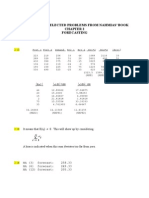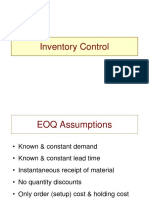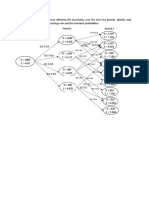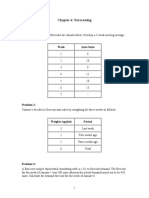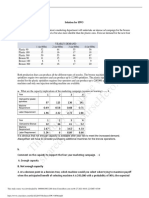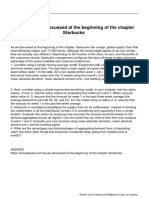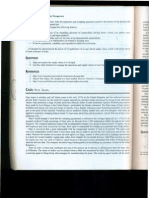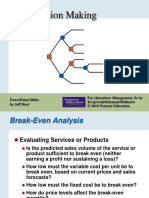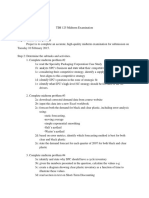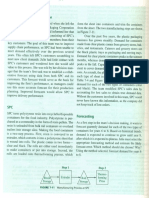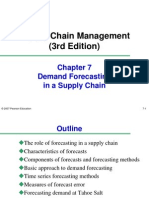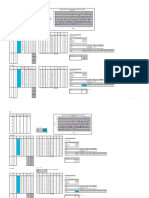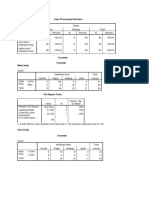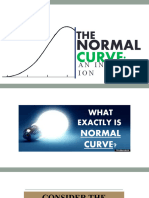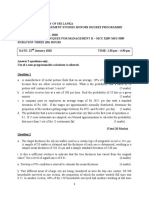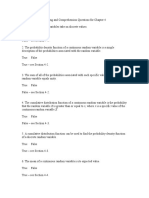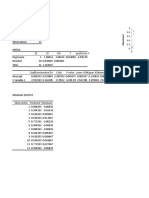0% found this document useful (0 votes)
242 views4 pagesSPC - Part A - Case Discussion
The document discusses forecasting methods for Specialty Packaging Corporation, focusing on static forecasting and Winter's model. It details the steps for deseasonalizing demand, running regressions, and calculating seasonal factors for both black and clear plastic. The results indicate that the optimal smoothing constants for both methods yield similar solutions for the forecasting of demand.
Uploaded by
SARA CRUZCopyright
© © All Rights Reserved
We take content rights seriously. If you suspect this is your content, claim it here.
Available Formats
Download as DOCX, PDF, TXT or read online on Scribd
0% found this document useful (0 votes)
242 views4 pagesSPC - Part A - Case Discussion
The document discusses forecasting methods for Specialty Packaging Corporation, focusing on static forecasting and Winter's model. It details the steps for deseasonalizing demand, running regressions, and calculating seasonal factors for both black and clear plastic. The results indicate that the optimal smoothing constants for both methods yield similar solutions for the forecasting of demand.
Uploaded by
SARA CRUZCopyright
© © All Rights Reserved
We take content rights seriously. If you suspect this is your content, claim it here.
Available Formats
Download as DOCX, PDF, TXT or read online on Scribd
/ 4
You might also like
- 100% (1)case study on facility location planning we will take an example of paradise recycling company operating in north india paradise Recycling Services Inc. has expanded its collection services into a new area which is himachal pradesh. The business wants to set up a series of collection facilities for recyclable products, such as cans, newspapers, and cardboard boxes in selected districts of h. p. It wants to locate its facilities so they are convenient, but at the same time it doesn't want to put a depot in every city in the area. Location analysis is an ideal means of helping Paradise serve its clients well at as low a cost as possible. it uses location analysis to show what its options are. the selection of appropriate location depending on the size of the industry can be done in two stagees 1- evaluaton of various geographic areas and the selection of an optimum area 2- with in each area there is a choice of proper site which can be urban ,sub urban ,or rural are gerer3 pages
